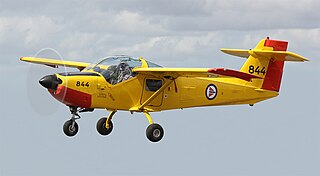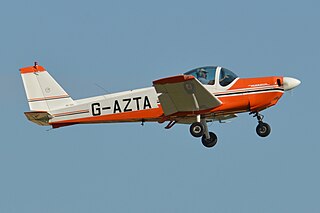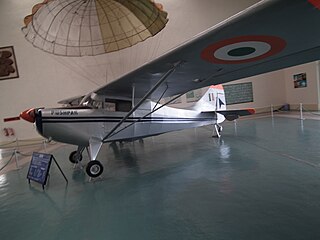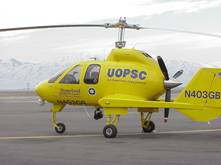
The Rollason Beta was a British midget racing monoplane developed from a competition to build a Formula One air racer in the 1960s in England. The Beta was first flown on 21 April 1967. The aircraft were successful air-racers in England during the late 1960s and early 1970s.

Fokker D.XVII, was a 1930s Dutch sesquiplane developed by Fokker. It was the last fabric-covered biplane fighter they developed in a lineage that extended back to the First World War Fokker D.VII.

Saab MFI-15 Safari, also known as the Saab MFI-17 Supporter, is a propeller-powered basic trainer aircraft used by several air forces.

The Malmö Flygindustri MFI-9 Junior was a light aircraft produced in Sweden in the 1960s. The aircraft was also produced under licence in West Germany as the Bölkow Bo 208.

The MBB Bo 209 Monsun is a two-seat light aircraft that was developed in West Germany in the late 1960s.

The Hindustan HUL-26 Pushpak ("Flower") was a 1950s Indian two-seat cabin monoplane designed and built by Hindustan Aeronautics Limited, based on the Aeronca Chief.

The Malmö MFI-10 Vipan was a four-seat light utility monoplane designed and built in Sweden by Malmö Flygindustri. Only three aircraft were built and the type did not enter quantity production.

The Wassmer WA-80 Piranha is a French two-seat low-wing cabin monoplane trainer designed and built by Société Wassmer. Based on the same construction as the company's WA-50 four-seater, the WA-80 was a scaled down version. The prototype, registered F-WVKR, first flew in November 1975 powered by a 100 hp Rolls-Royce Continental O-200 engine. Wassmer appointed a receiver and suspended production in 1977 after 25 had been built.

The Practavia Sprite is a British two-seat homebuilt training or touring monoplane designed for amateur construction. It was the winning entry in a competition sponsored by Pilot magazine in 1968. The design had been begun as a magazine-sponsored project by Peter Garrison, who worked for Pilot at the time; when the project did not move forward rapidly enough to suit him, he returned to the United States, where he modified his design into what would become his first Melmoth.

The Zlin 22 Junak was a 1940s two-seat cabin monoplane, developed from the Zlin 381.

The Scintex ML 250 Rubis was a French civil utility aircraft of the 1960s.

The Scheibe SF-23 Sperling (en:Sparrow) is a 1950s German two-seat cabin monoplane.

The Gazuit-Valladeau GV-103 Gazelle was a French-built light two- to four-seat training, aerobatic and touring aircraft of the late 1960s.
The Beagle B.218X was a 1960s British four-seat twin-engined light transport monoplane built by Beagle Aircraft Limited at Shoreham Airport. The prototype was modified into the Beagle B.242X but neither variant entered production.

The Groen Hawk 4 was a single engine, pusher configuration, four seat autogyro built in the United States in the late 1990s. Three prototypes, two piston engined and one turboprop powered, were flown but the Hawk did not go into production.
The MFI BA-12 Sländan is a single seat ultralight of pod and high boom configuration and with a butterfly tail. It was designed and built in Sweden in the 1980s and led to a two-seat, slightly larger, development called the BA-14.
The Civil Aviation Department MG-1 was a one-off Indian motor glider, seating two side by side and first flown in 1983.
The Nicollier HN 500 Bengali is a single engine French light aircraft built in France in the 1980s. It seats two in side-by-side configuration. Only one was built, flying for the first time in 1988; it remains active with a French preservation group.

The Coupé-Aviation JC-01 is the first of a series of very similar designs of two seat, single engine sports aircraft, amateur built from plans in France from 1976. These provided a range of engine sizes and undercarriage layouts, but total production was small.
The Chasle LMC-1 Sprintair is an all-metal, single-seat sports light aircraft designed in France in the early 1970s and intended to be built by aero clubs from plans.

















